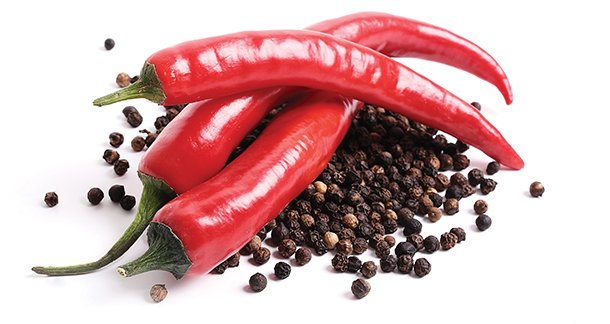Globally sourced ingredients are one of the main contributors to the modern food industry. It is growing at 4.8% CAGR while being a $51.42 billion market in 2024. Now, consumers can access vast flavour varieties along with nutritional benefits in their near market. These are not the local products, and that is a huge USP. Quinoa, currently at $1.2 billion in market value—a popular superfood from South America for example. Plus, organic products are already in demand and will grow more in the future.
These are the reasons for businesses to know how these products serve the local economy and support sustainability practices. So, today we will be discussing all about why we need globally sourced ingredients and exploring popular ones along with their future trends and challenges.
What Are These?
We can refer to food products from various countries as globally sourced ingredients. Their main characteristics are unique flavours, nutritional benefits, and cultural value. Chefs and consumers can now access it after the food supply chain’s huge shift towards globalisation. Many businesses can offer it locally today, which was limited to some regions only. Overall, this shift promotes international trade and local economies simultaneously.
Saffron from Iran, vanilla from Madagascar, and chilli peppers from Mexico are some great examples of these ingredients. These are now some of the must-have items in many global kitchens. Moreover, growth in agricultural exports shows how valuable these ingredients have become.
Why We Need Them
These several factors impact globally sourced ingredients’ demand:
Culinary Diversity
Chefs and home cooks can make a variety of dishes if they can access these ingredients. This diversity is the reason for the richness of many recipes and a new consumer experience.
Nutritional Benefits:
There is not one but many globally sourced ingredients filled with nutrients that can be a part of a balanced diet. Quinoa, for example, is a complete protein with all nine essential amino acids. These are found especially in the Andean region of South America. So, products like this could be a vegetarian’s first choice.
Economic Impact
Farmers and producers in developing countries can access a huge market to export their products. So, it’s consumers purchasing these goods directly contribute to their livelihood. That’s how the market has reached this far, which was impossible without consumer demand.
Sustainability
These ingredients also promote sustainability at some level. If a local business is sourcing avocados from Mexico during its peak season, it can reduce its carbon footprint, which could have required more resources in less suitable climates.
Cultural Value
Cultural heritage and history are inevitable with any globally sourced ingredients. Oregano or thyme is an example of that—connects consumers to Mediterranean culinary practices.

Challenges in Sourcing Globally
Despite the benefits, sourcing globally comes with its own challenges.
- Supply chain disruptions are one of the major issues that we have already experienced at some point. The COVID-19 pandemic was one of the major examples of it, as many countries faced delays in shipping. Plus, the overly high costs of imported goods were another dealbreaker for businesses.
- Maintaining the same quality levels in different regions is not an easy task. Different agriculture practices according to different countries are the main reason for this. So, companies should craft a standard protocol for maintaining quality and make sure that products are of the same quality despite the region.
- Just like different agricultural practices, every country has their own import regulations and food safety standards. In some cases, adhering to these rules can be too hectic and complex—a huge challenge that can be a dealbreaker too.
Popular Globally Sourced Ingredients
There are a few popular globally sourced ingredients, especially known for their unique characteristics.
Quinoa, as discussed, is really a great example of the same. Its high-quality protein and gluten-free tag make it popular worldwide. The global market value of it will reach $1.24 billion by 2030, as it is growing at 4.85% CAGR. Consumers seeking vegetarian protein options are the main market drivers here.
Saffron, on the other hand, is one of the most expensive spices by weight. A major chunk of it comes from Iran and Spain. Just one kilogram of these ingredients requires about 110,000–170,000 flowers—also the reason for it being this luxurious. Paella and risotto kinds of dishes contain it mostly.
Avocado has invaded the global market in recent years, especially for its health benefits and versatility in dishes ranging from guacamole to salads. Mexico is the largest producer of it, with more than 30% global share. Lastly, cocoa is in huge demand and comes mainly from West Africa. Demand for ethical chocolates is simultaneously boosting its surge.
Future Trends in Ingredient Sourcing
Some future trends are redefining ingredient sourcing due to consumer preference evolution.
- Consumers are continuously asking for organic products since they have started being health conscious and concerned for the environment.
- Blockchain is one of the major innovations in recent years that’s letting industry provide better transparency. Consumers can trace their food from scratch.
- Global sourcing is already a priority; meanwhile, local sourcing is becoming a trend. This is happening mainly due to rising carbon footprint concerns among consumers.
- Adaptive source strategies are going to be the approach as climate change is impacting agriculture worldwide. Changing growing conditions and crop viability is the main focus.
Conclusion
We hope that businesses can get an idea of how globally sourced ingredients shape the F&B sector. Be it a unique culinary experience or supporting economic growth, these products are now necessities in many worldwide kitchens and consumers’ diets. Diverse flavours and nutritional benefits are its main characteristics, as well as USP. Both chefs and home cooks are demanding it to give richness to their recipes. More than that, these products promote sustainability while supporting farmers and exporters worldwide.



